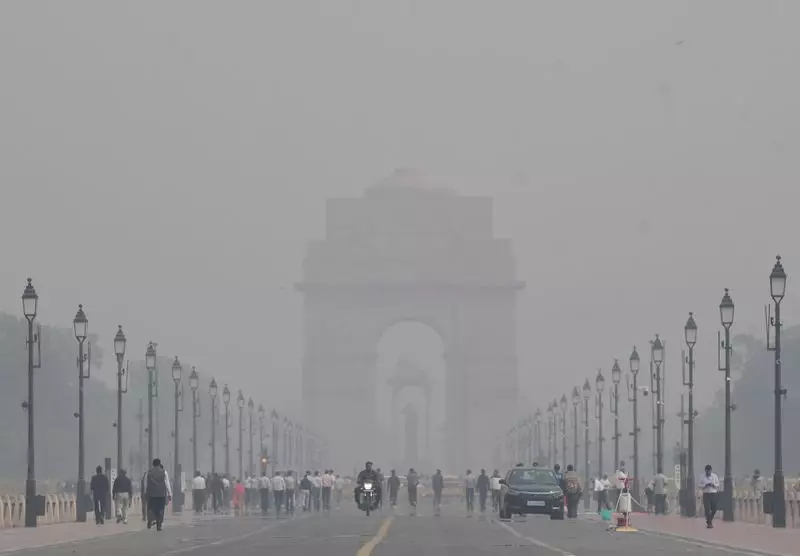
Delhi residents are struggling to breathe as the capital city plunges into another severe air pollution crisis. The air quality index (AQI) has crossed dangerous thresholds, prompting urgent health warnings and raising concerns among medical experts and environmental authorities alike.
Alarming Pollution Levels Gripping the Capital
The latest data reveals that Delhi's overall air quality index reached 447, firmly placing it in the 'severe' category. This dangerous level of pollution poses significant health risks to all residents, particularly vulnerable groups including children, elderly citizens, and those with pre-existing respiratory conditions. The monitoring station at Anand Vihar recorded particularly worrying numbers with PM2.5 levels hitting 485 and PM10 concentrations reaching 444, both well into the hazardous range.
Meteorological conditions have played a crucial role in this deterioration. Calm wind conditions and low temperatures have created a toxic trap where pollutants accumulate rather than disperse. The India Meteorological Department has noted that wind speeds remain insufficient to provide any meaningful cleansing effect, while the minimal ventilation index further exacerbates the situation.
Health Emergency and Government Response
Medical professionals across Delhi are reporting increased cases of respiratory distress. Hospitals are witnessing a surge in patients complaining of breathing difficulties, persistent coughing, and eye irritation. Doctors emphasize that prolonged exposure to such polluted air can lead to serious long-term health consequences, including reduced lung function and increased risk of cardiovascular diseases.
The Commission for Air Quality Management (CAQM) has responded by implementing Stage III of the Graded Response Action Plan (GRAP). This includes immediate bans on non-essential construction activities and restrictions on the operation of BS-III petrol and BS-IV diesel vehicles. The authorities have also intensified patrolling to check pollution sources and ensure compliance with environmental regulations.
Regional Factors and Long-term Solutions
The pollution crisis in Delhi isn't occurring in isolation. Neighboring states including Punjab, Haryana, and Uttar Pradesh have reported significant farm fire incidents, with satellite data detecting numerous active fire points. This regional dimension complicates pollution control efforts, as air currents transport pollutants across state boundaries.
Environmental experts stress that long-term solutions require coordinated action across multiple fronts. This includes accelerating the transition to cleaner energy sources, improving public transportation infrastructure, implementing sustainable agricultural practices, and strengthening enforcement of environmental regulations. The current crisis underscores the urgent need for comprehensive, year-round pollution control measures rather than reactive responses during peak pollution periods.
As Delhi continues to grapple with this annual environmental emergency, residents are advised to limit outdoor activities, use N95 masks when going outside, and employ air purifiers indoors. The situation remains critical, with authorities monitoring conditions closely for any further deterioration that might necessitate additional emergency measures.





